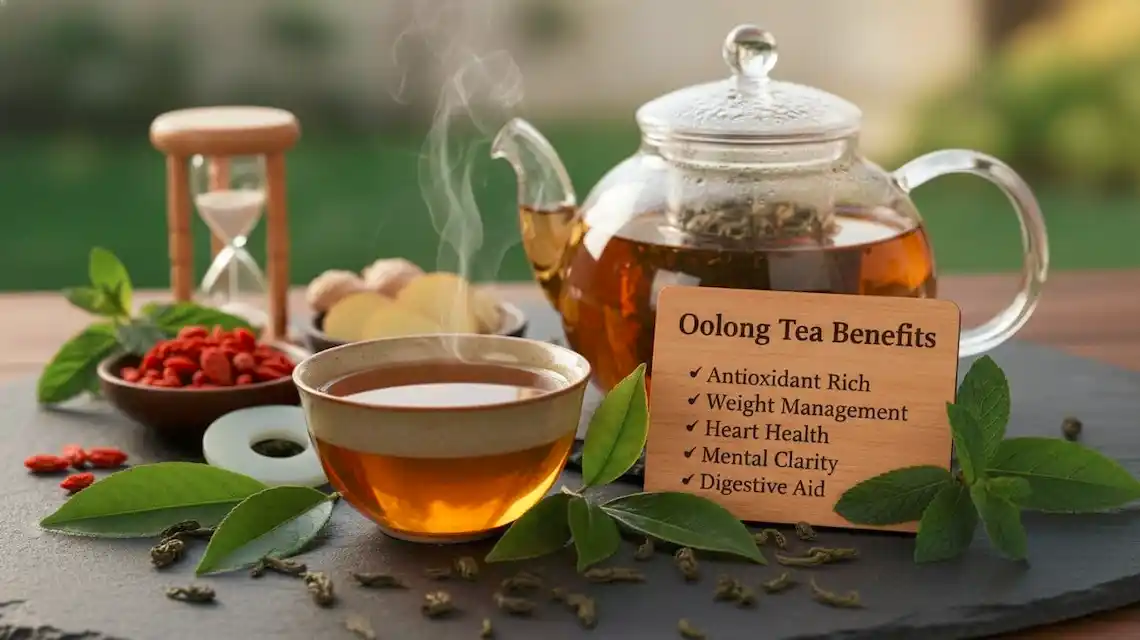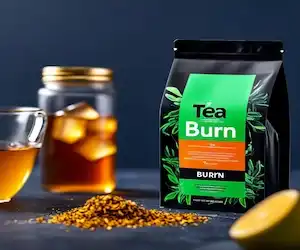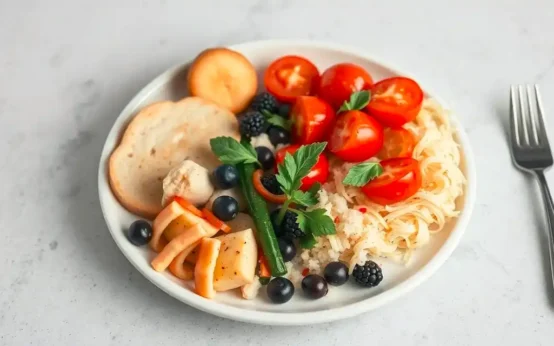Looking for a drink that sits right between green and black tea? Oolong tea benefits hit that sweet spot. You get gentle energy, smooth flavor, and steady focus in one cup. Many people turn to this tea for a boost that does not cause jitters. Oolong is a partially oxidized tea from the Camellia sinensis plant. That simple middle step changes its taste, aroma, and health perks.
In this guide, you will learn how oolong may support metabolism and weight, heart health, blood sugar, and brain focus. You will also see how to brew it for the best flavor, when to drink it, and who should be careful. Expect clear, science-backed tips explained in plain language without hype. If you want a tea that tastes great and treats your body kindly, keep reading.
What Is Oolong Tea and How It Delivers Unique Oolong Tea Benefits
How oolong is made and why oxidation matters
Oolong starts like all true teas, picked from the same plant that gives us green and black tea. The magic lies in what happens next.
Producers wither the leaves, roll or bruise them, allow partial oxidation, then fire them to lock in flavor. Oxidation is a natural browning process, like when an apple slice darkens. In tea, this changes both taste and the mix of helpful compounds.
Light oolongs are closer to green tea. They taste floral and fresh, and often carry more green-tea type catechins. Darker oolongs lean toward black tea. They taste toasty and rich, and build up more theaflavins from oxidation.
Different levels of oxidation create different flavors, aromas, and potential benefits.
Caffeine and L-theanine for calm, focused energy
An 8 ounce cup of oolong usually has about 30 to 50 mg of caffeine. You also get L-theanine, an amino acid that promotes calm focus.
Together, they help many people feel alert yet steady. That is the classic tea feeling, a clean lift without wired edges.
For reference, an 8 ounce coffee averages about 80 to 100 mg of caffeine or more. Oolong sits lower, which helps with a smoother ride.
Antioxidants in oolong: catechins and theaflavins
Oolong contains polyphenols, the plant compounds behind many tea benefits. You will hear two names often.
- Catechins: common in green tea, support antioxidant action and metabolic health.
- Theaflavins: form during oxidation, support heart and cholesterol balance.
These compounds help your body manage oxidative stress, which is linked with aging and common health concerns.
Oolong vs green vs black tea: what to sip for your goals
Green tea is light, grassy, and crisp. It often feels the most gentle, with a bright, clean finish.
Black tea is bold, malty, and strong. It often carries more caffeine and a robust taste.
Oolong sits between the two. It can be light and floral or roasty and warm, with balanced caffeine and a rounded flavor.
Quick guide: choose green for very gentle energy and a crisp taste, black for bold flavor and a stronger lift, oolong for balanced benefits and flexible taste.
Science-Backed Oolong Tea Benefits for Body and Mind
Metabolism and weight support: what research shows
Oolong may help your body burn a few extra calories each day. The mix of caffeine and tea polyphenols can raise energy use slightly and may nudge fat burning.
Results are modest, not magic. Think of it like a small tailwind on a bike ride. You still have to pedal.
Pair daily oolong with steady meals, protein, fiber, and daily movement for real progress. Many people find it easier to skip sugary drinks when a warm, fragrant tea is close by. That simple swap also helps with weight goals.
Heart health and cholesterol: small but meaningful changes
Tea drinkers, including those who sip oolong, are often linked with healthier heart markers. That includes modest improvements in LDL and HDL patterns, and more stable blood pressure over time.
The effect builds with routine. One cup does not fix cholesterol, but a daily habit may nudge numbers in a better direction. Combine it with whole foods, less salt, and regular activity for the best results.
Blood sugar and insulin: steadier energy through the day
Some studies suggest oolong may help with post-meal blood sugar and insulin sensitivity. The effect seems mild yet useful, especially when paired with smart habits.
For steadier energy, drink oolong with or after meals that include fiber. Think oats, beans, leafy greens, or apples. Add a short walk after eating to tap into even better glucose control.
Brain and mood: alert yet calm focus
Caffeine provides the lift, and L-theanine smooths the edges. That combo makes oolong a solid choice for study, work, or creative tasks.
Two simple tips: brew a light cup in the morning for focus, then sip a small cup after lunch to avoid the afternoon slump. If you are sensitive to caffeine, cut off intake by mid-afternoon. Good sleep beats any beverage.
How to Drink Oolong Tea for the Best Results
How much oolong tea per day and the best time to drink it
Most adults do well with 1 to 3 cups per day. Keep your total caffeine under 400 mg from all sources.
Timing ideas:
- Morning: a clean lift to start your day.
- Early afternoon: a gentle push to stay productive.
- Evening: avoid if caffeine disrupts your sleep.
Match your schedule to your sensitivity. Some people do fine after dinner, others do not.
Brewing guide: water temperature, steep time, and multiple infusions
Great oolong starts with water that is hot but not boiling. Aim for 185 to 205°F (85 to 96°C). If you do not have a thermometer, let boiling water rest for 60 to 90 seconds.
Use about 2 grams of loose leaf tea per 8 ounces of water. Start with a 2 to 3 minute steep, then taste and adjust. Shorter steeps keep it light, longer steeps bring out depth and roast.
Good oolong keeps giving. Re-steep the same leaves 2 to 4 times. Each infusion shifts in flavor, from floral and sweet to richer and rounder.
What to add or avoid: milk, sugar, lemon, or fasting
For the most benefits, drink oolong plain. You get flavor without extra calories.
Sugar and heavy cream work against weight goals. If you like a touch of sweetness, try a small drizzle of honey or a splash of milk. Keep portions small.
Lemon is fine and can brighten the taste. During a fast, plain tea is usually fine for most people. Any calories, even a little milk or sugar, will break a strict fast.
Pick the right oolong: light and floral or dark and roasted
Pick your style by mood and meal.
- Light and floral: try Tieguanyin or high mountain oolong. These are bright, silky, and great without milk.
- Dark and roasted: try Wuyi rock oolong, like Da Hong Pao. These feel toasty and full, a nice match for savory food.
Choose loose leaf when you can. You often get better flavor and better value than most tea bags.
Side Effects, Risks, and Who Should Avoid Oolong Tea
Caffeine safety: sleep, anxiety, pregnancy, and kids
Too much caffeine can cause jitters, a fast heart rate, headaches, or broken sleep. If that happens, cut back on dose, shorten the steep, or switch to lighter oolongs.
Decaf oolong exists, and some brands taste solid. It can help if you are caffeine sensitive.
Pregnant people should ask a doctor about safe caffeine limits. Many aim for under 200 mg per day from all sources. Kids should have little to no caffeine, so keep tea servings small or choose herbal options.
Medicine and nutrient issues: iron, bones, fluoride, and thyroid
Tea can lower iron absorption from food, especially plant-based iron. If you have low iron, drink tea between meals, not with them. A squeeze of lemon can help with iron from plant foods.
Very high tea intake over long periods has been linked with rare issues, like low bone density or thyroid stress. These cases usually involve large amounts each day. Keep your intake moderate and varied.
Fluoride occurs in tea leaves. Normal tea drinking is not a concern for most people. If you consume very large amounts daily, rotate with herbal teas and vary your sources.
Safe-use tips: start low, rotate teas, and watch supplements
Start with 1 cup per day and notice how you feel. If your sleep and mood are steady, go to 2 or 3 cups.
Rotate oolong with green, white, or herbal teas. Variety reduces the risk of overdoing any one compound and keeps your taste buds happy.
Avoid high-dose tea extract pills unless your doctor agrees. Concentrated supplements carry a higher risk of side effects than brewed tea.
When to talk to your doctor or stop drinking it
Stop or cut back if you notice a racing heart, persistent jitters, stomach pain, or trouble sleeping. New symptoms after starting tea are a simple red flag.
Check with a clinician if you have heart rhythm problems, anxiety disorders, thyroid disease, bleeding issues, or take blood thinners. If you are scheduled for surgery, mention your tea habit. It is always smart to share the full picture.
Conclusion
Oolong sits in the middle, and that is its secret. You get steady energy, oolong tea benefits for metabolism and heart health, and a calm focus that carries you through the day.
Try this 3-step plan: pick a style you are excited to taste, brew a test cup with a 2 to 3 minute steep, then log how you feel for a week. Track energy, sleep, and cravings. Adjust dose and timing until it fits.
A small daily ritual can change how your day feels. Let your next cup be the one that makes better habits stick.
Related post:
Oolong Tea Benefits: Quick, Clear Answers
What makes oolong tea different from green or black tea?
Oolong is partially oxidized, green tea is barely oxidized, black tea is fully oxidized. This middle ground gives oolong a mix of green tea catechins and black tea theaflavins. You get a balanced flavor and a broad antioxidant profile.
Does oolong tea help with weight management?
It can support weight control, but it is not a magic fix. Caffeine and polyphenols may boost calorie burn and fat oxidation a little. Pair it with a balanced diet, enough protein, and daily movement for real results.
Can oolong improve heart health?
Tea intake is linked with a lower risk of heart disease in observational studies. Oolong may help reduce LDL cholesterol and triglycerides slightly. Use it as one part of a heart-healthy routine, not a replacement for treatment.
How does oolong affect blood sugar?
Some studies show small improvements in fasting glucose and insulin sensitivity. Effects vary by person. If you take diabetes medication, monitor levels and talk with your clinician.
Will oolong tea give me better focus or energy?
Yes, mildly. An 8-ounce cup has about 30 to 50 mg of caffeine, plus theanine. Many people feel calm focus without the jitters they get from stronger coffee.
Is oolong tea good for digestion or gut health?
Tea polyphenols can act as prebiotics for some gut bacteria. Many people find oolong gentle on the stomach when brewed light. Very strong tea, especially on an empty stomach, can feel harsh for some.
What antioxidants are in oolong?
You get catechins, theaflavins, thearubigins, and EGCG in smaller amounts than most green teas. These compounds help counter oxidative stress. Variety depends on the cultivar and roast.
Can oolong help with skin health?
Antioxidants help protect cells from oxidative stress, which can affect skin. Oolong will not replace sunscreen or skincare, but it fits well in a skin-friendly lifestyle.
Is oolong hydrating, or does the caffeine dehydrate you?
It hydrates. The diuretic effect of tea is mild in regular drinkers. Count it toward your daily fluids unless your doctor advises otherwise.
How much oolong tea should I drink for benefits?
1 to 3 cups per day works for most adults. Start low if you are sensitive to caffeine. More is not always better, especially late in the day.
Are there any side effects or risks?
Possible issues include insomnia, anxiety, or heartburn if you brew it strong or drink it late. Tea contains oxalates, which can matter for people prone to kidney stones. Very strong, old-leaf teas can be high in fluoride. Choose quality leaves and vary your beverages.
Who should avoid or limit oolong tea?
Use caution if you are pregnant, breastfeeding, sensitive to caffeine, or have iron deficiency. Tea polyphenols can reduce non-heme iron absorption from meals. If you take blood thinners or heart or diabetes meds, ask your clinician.
Does oolong stain teeth or help dental health?
Tea can stain enamel over time. On the plus side, natural fluoride and polyphenols may support oral health. Rinse with water after drinking, and keep up with cleanings.
What is the best time to drink oolong for benefits?
Morning or early afternoon works well for focus and metabolism support. Avoid the last 6 hours before bed if you are caffeine sensitive. After meals can lessen any stomach upset.
How should I brew oolong to get the most benefits?
Use fresh water at 185 to 205°F. Steep 2 to 3 minutes for a light cup, longer for a richer brew. Many oolongs handle multiple short infusions. Oversteeping increases bitterness and caffeine without adding benefits.
Is cold brew oolong still beneficial?
Yes. Cold brew draws out a smooth flavor and fewer bitter compounds. It usually has less caffeine per ounce, which some people prefer.
Does adding milk or sugar reduce benefits?
Sugar adds empty calories, which can work against health goals. Milk may bind some polyphenols, but the real-world effect is small. If you like milk, keep it light.
Is loose leaf better than tea bags?
High-quality loose leaf often has better flavor and a broader range of compounds. Many tea bags use smaller particles that brew fast but can taste flat. If you use bags, pick brands that list origin and style.
What should I look for when buying oolong for health benefits?
Look for reputable sources, recent harvest dates, sealed packaging, and clear origin. Styles like Tieguanyin, Dong Ding, or high mountain oolongs are reliable picks. Lighter roasts lean fresher and greener, darker roasts taste toasty and rich.
How do I store oolong so it stays fresh?
Keep it airtight, cool, and dry, away from light and strong odors. Use within 6 to 12 months for peak flavor. Refrigeration helps only if the package is well sealed to prevent moisture.




 Importance of Hydration for Your Brain, Body, and Everyday Energy
Importance of Hydration for Your Brain, Body, and Everyday Energy  Healthiest Breakfast Cereal for Children
Healthiest Breakfast Cereal for Children  Anxiety Management Techniques
Anxiety Management Techniques  What Makes Fat in Our Body?
What Makes Fat in Our Body?  Best Diet to Reduce Risk of Diabetes
Best Diet to Reduce Risk of Diabetes  Long Term Effects from Botox
Long Term Effects from Botox